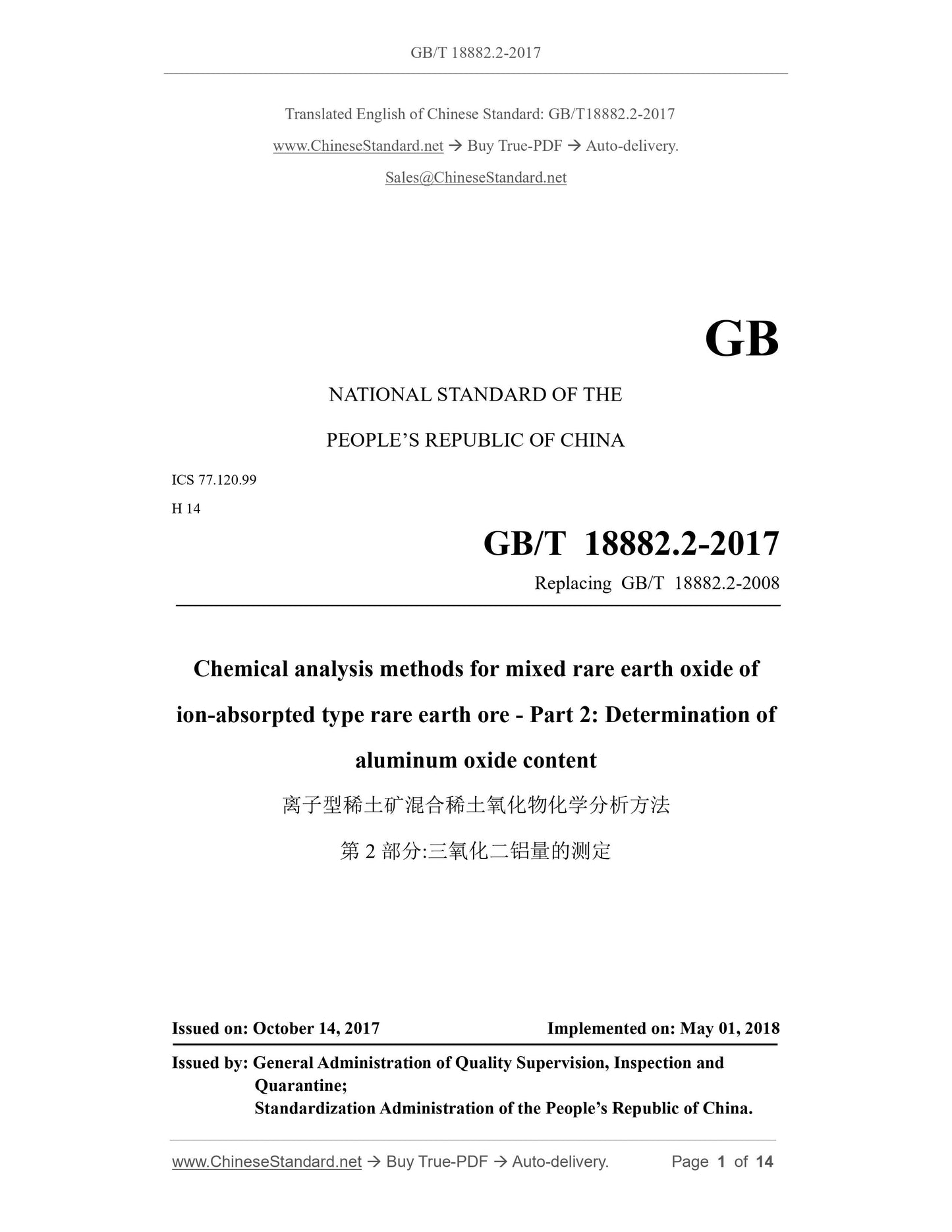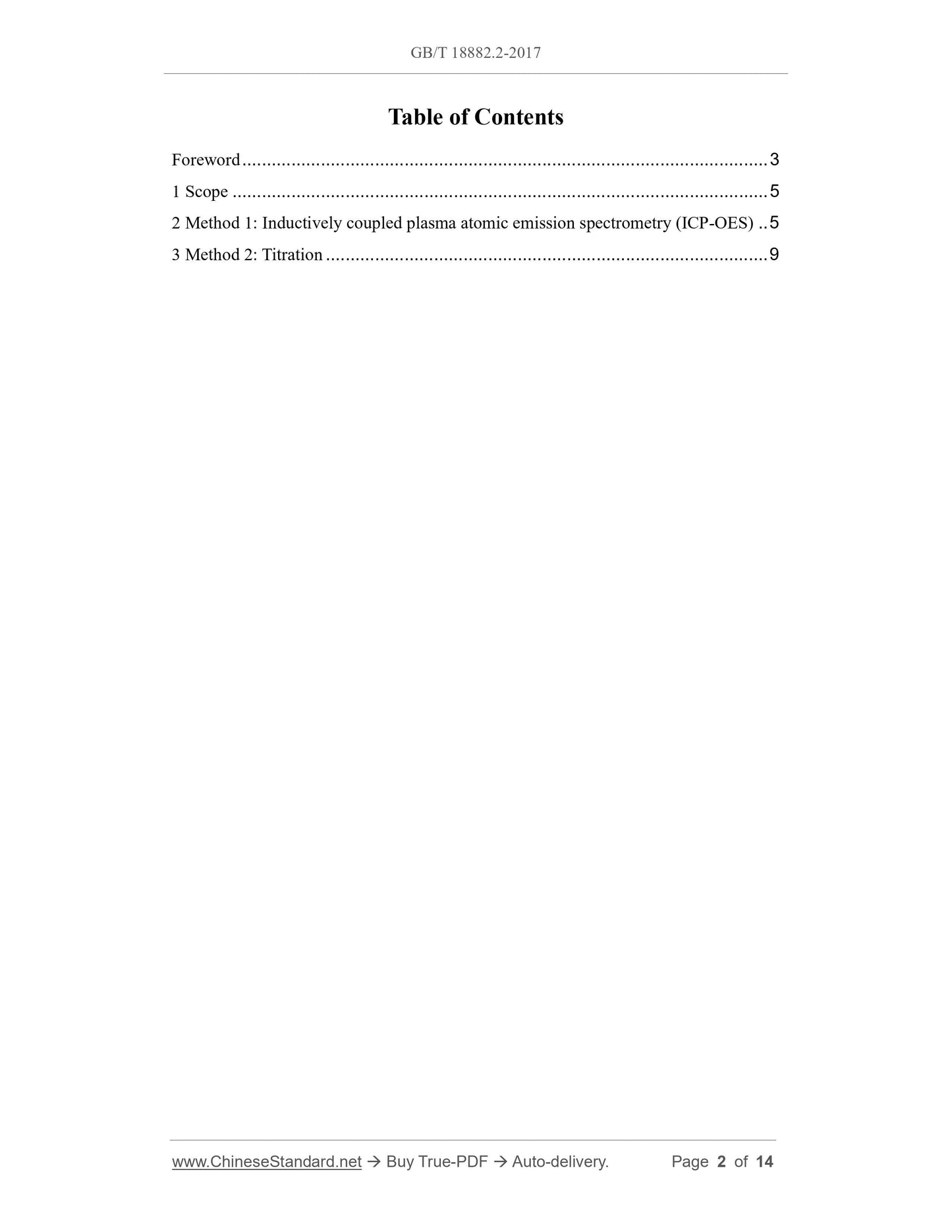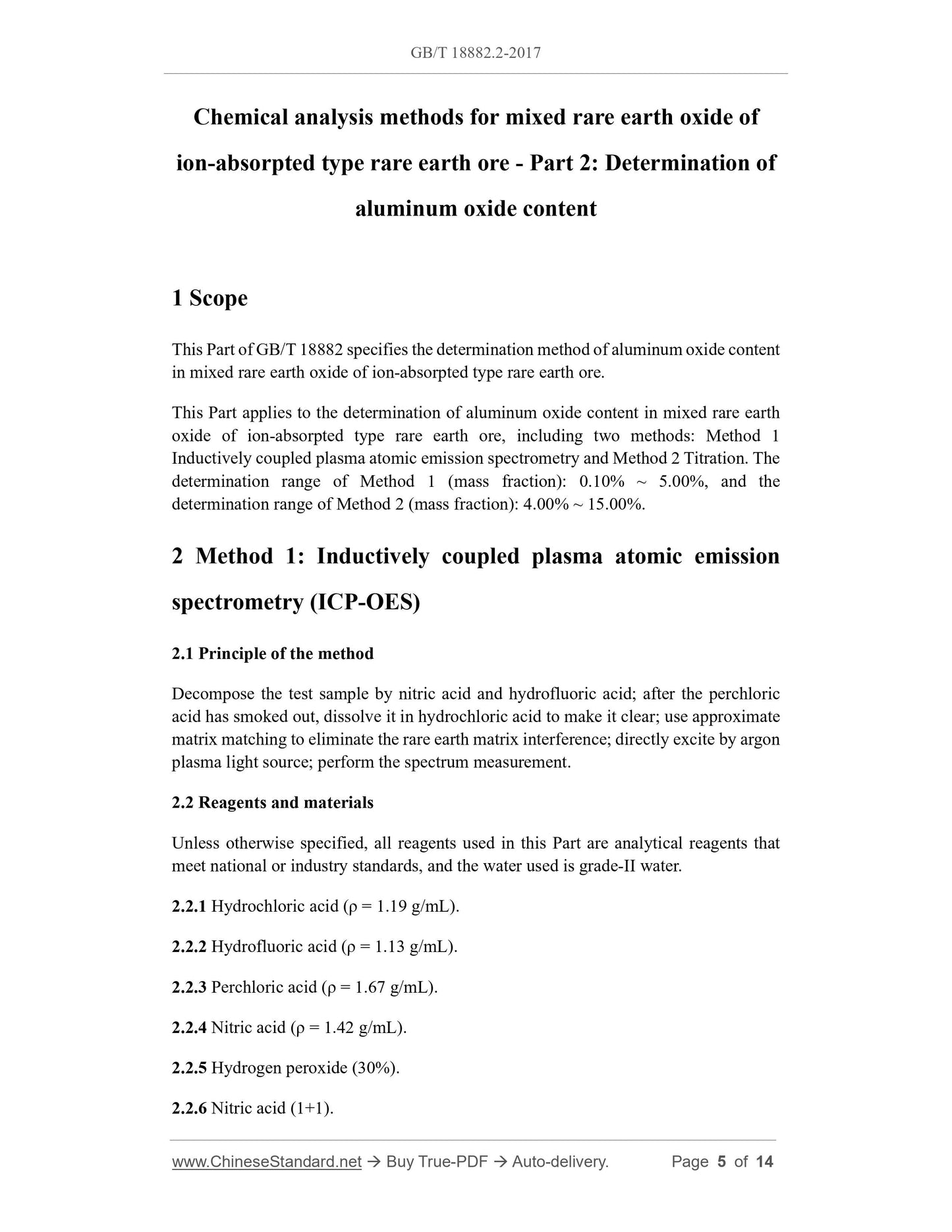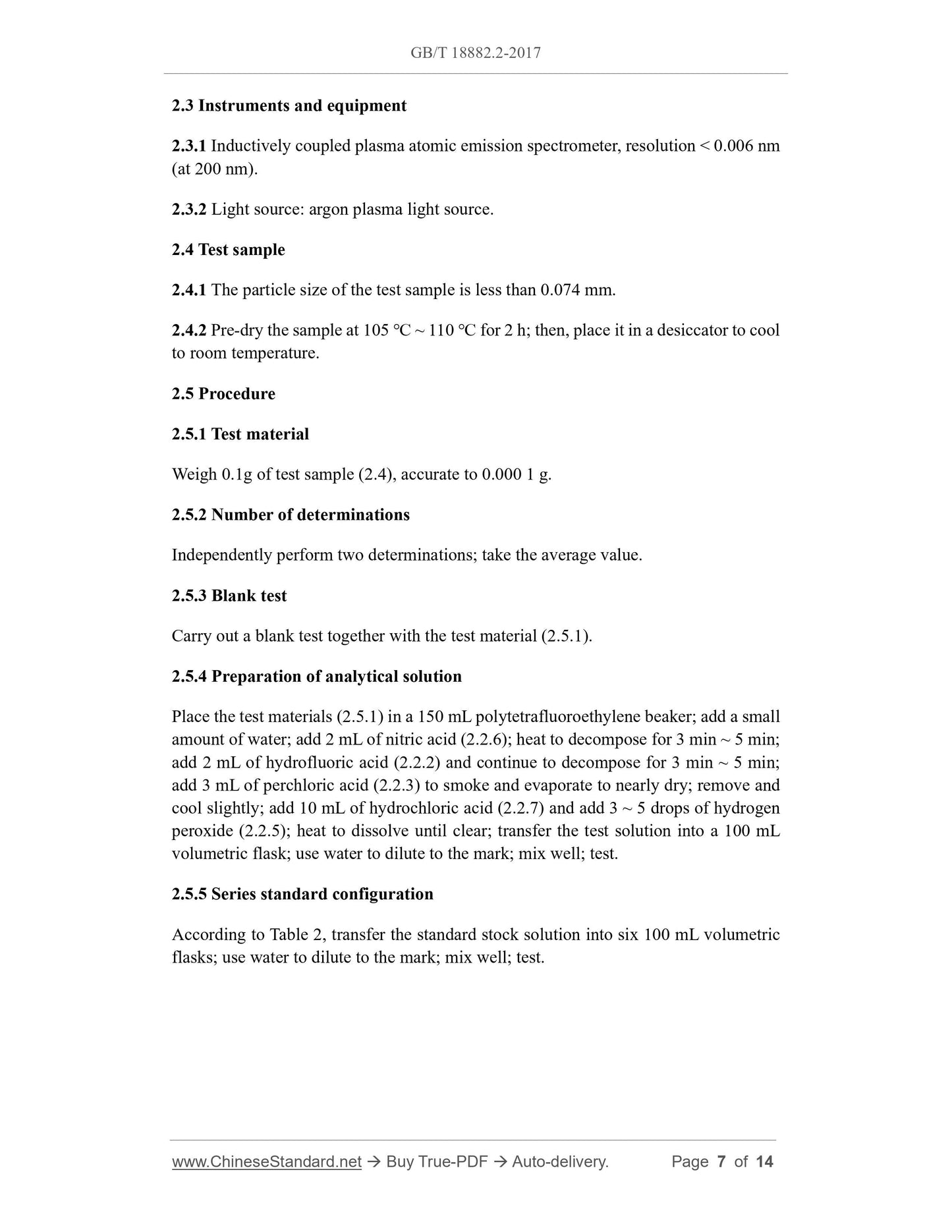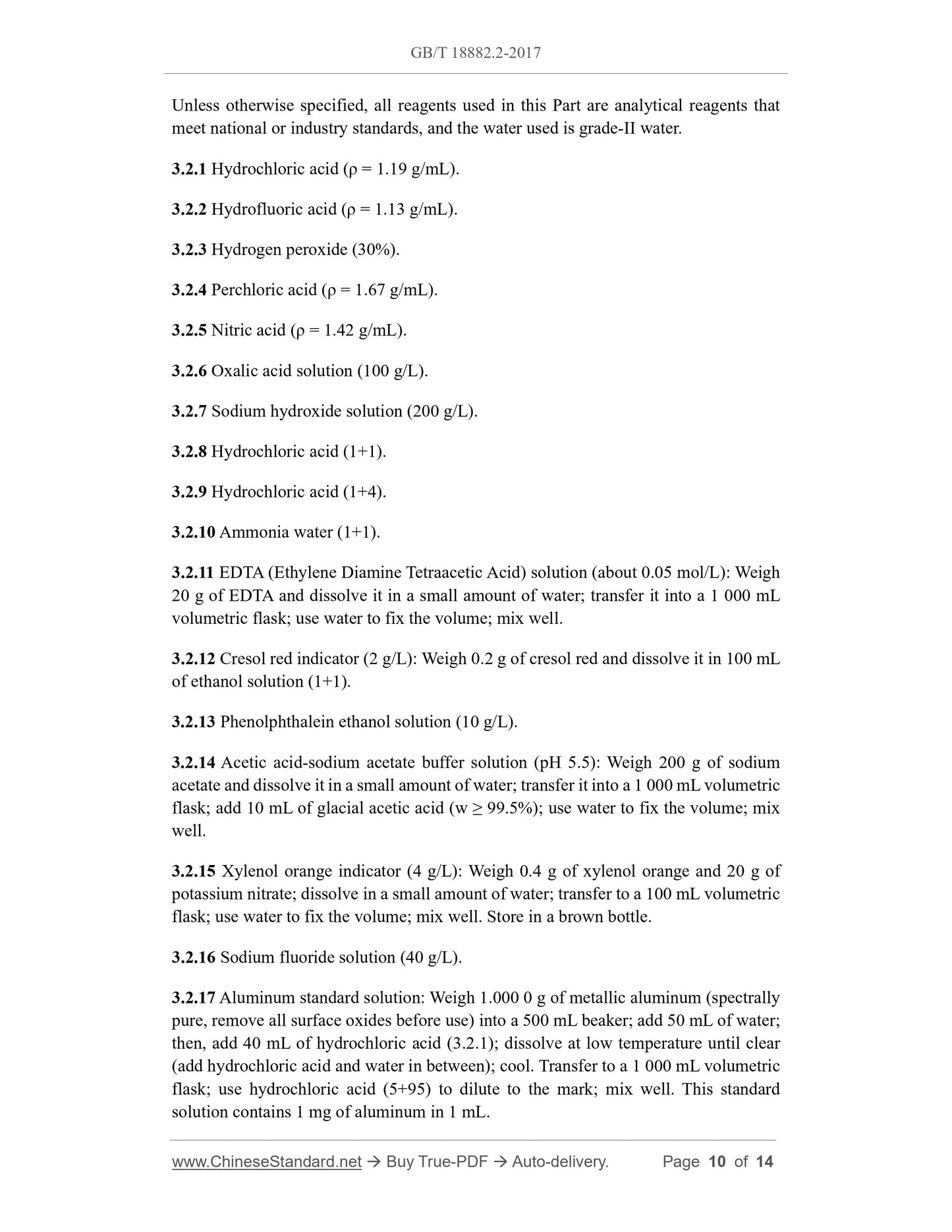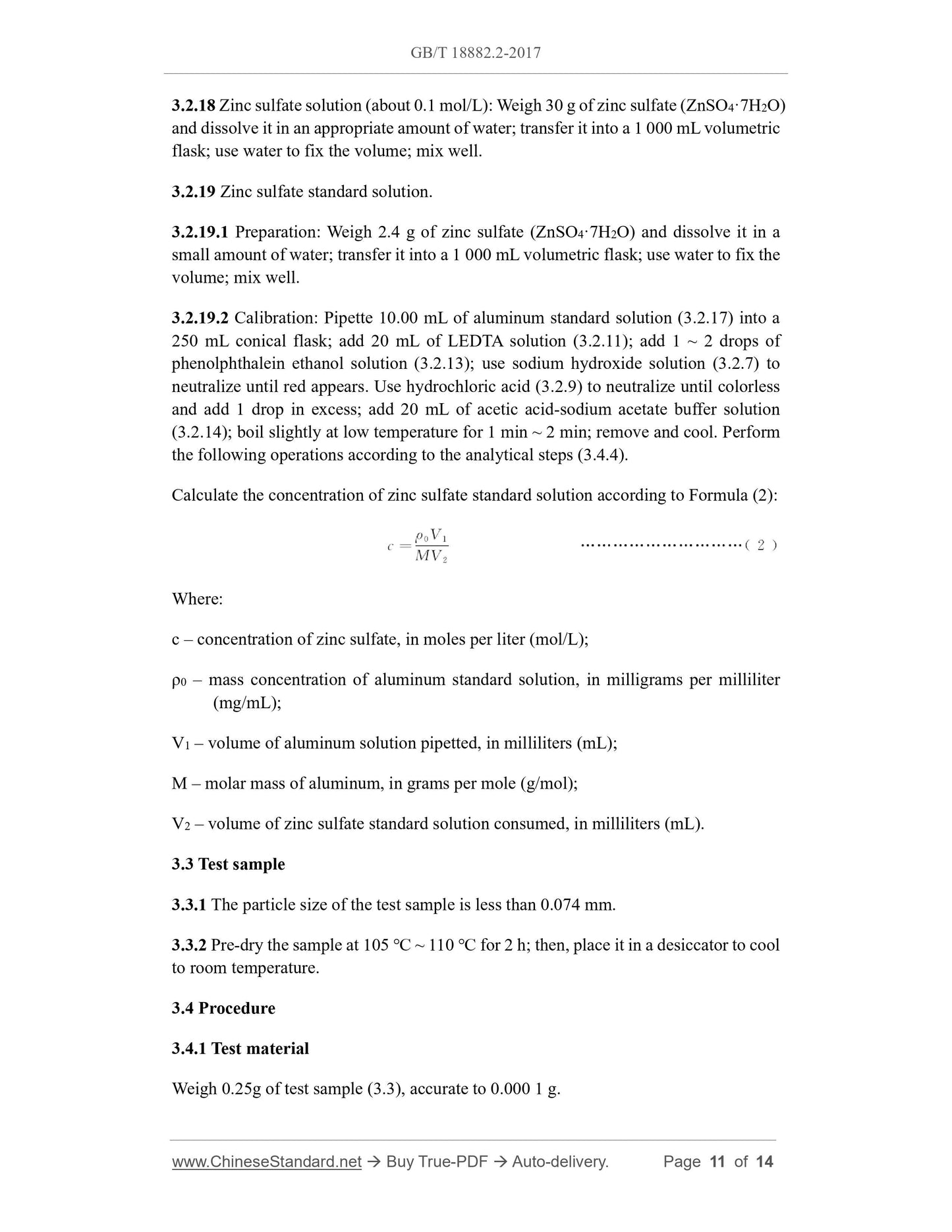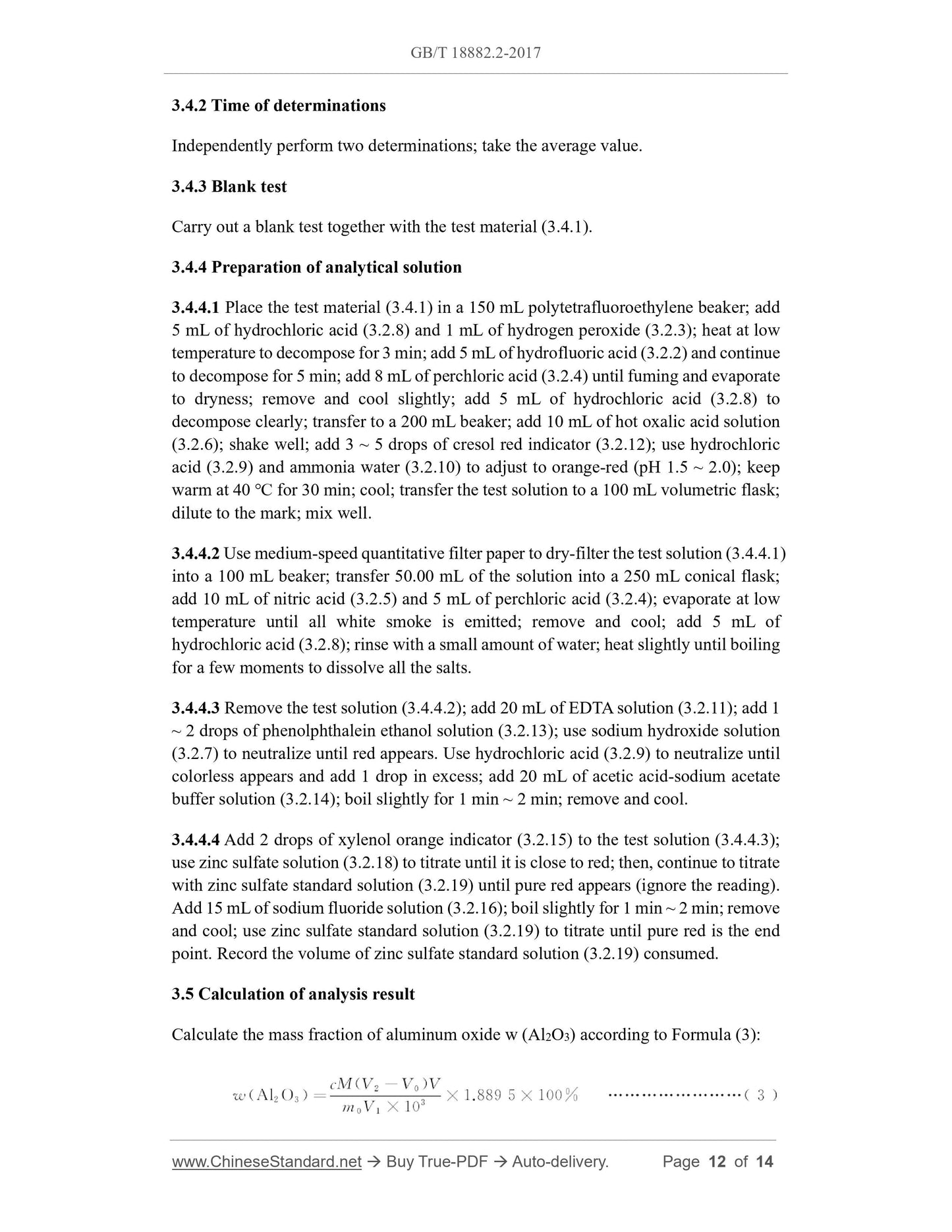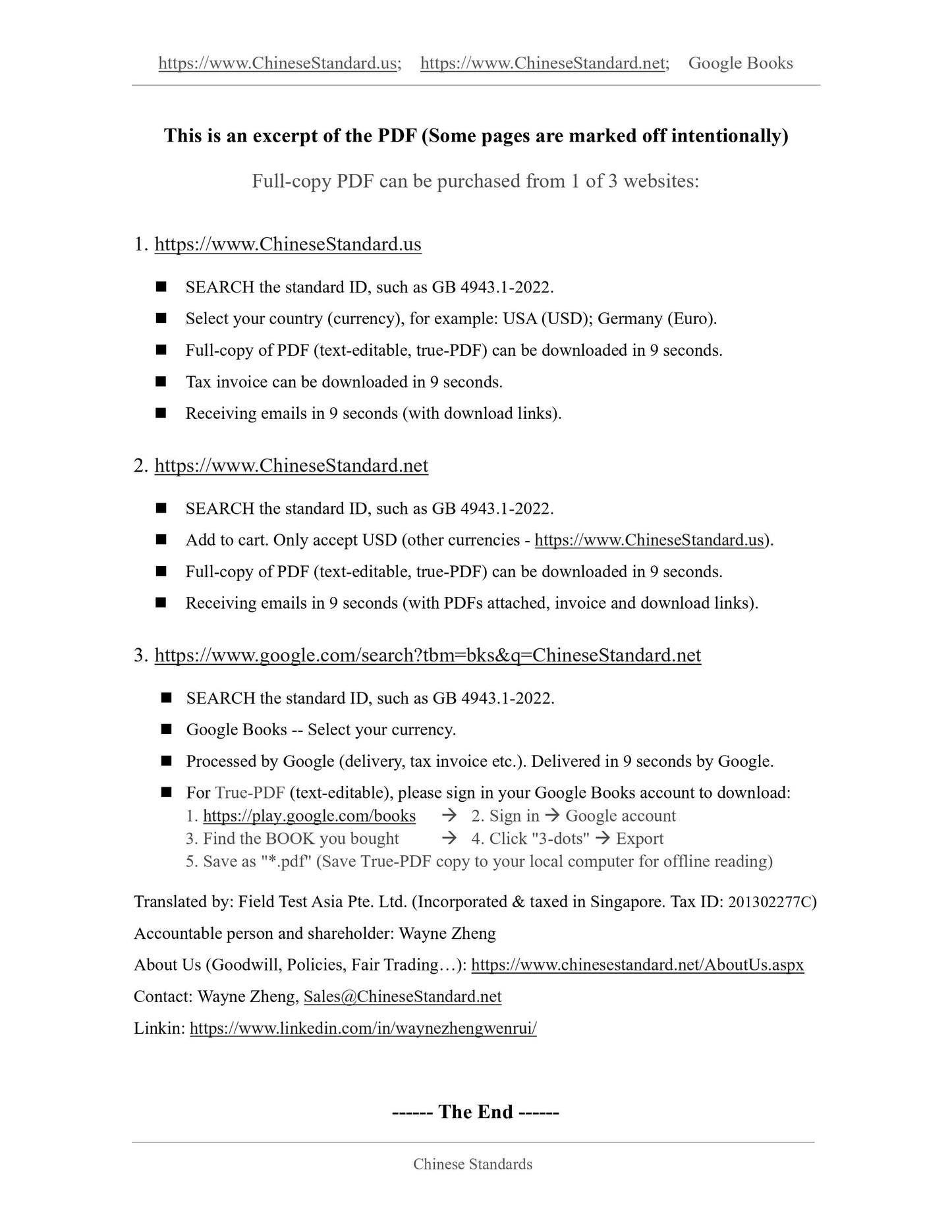1
/
of
8
www.ChineseStandard.us -- Field Test Asia Pte. Ltd.
GB/T 18882.2-2017 English PDF (GB/T18882.2-2017)
GB/T 18882.2-2017 English PDF (GB/T18882.2-2017)
Regular price
$165.00
Regular price
Sale price
$165.00
Unit price
/
per
Shipping calculated at checkout.
Couldn't load pickup availability
GB/T 18882.2-2017: Chemical analysis methods for mixed rare earth oxide of ion-absorbed type rare earth ore - Part 2: Determination of aluminum oxide content
Delivery: 9 seconds. Download (and Email) true-PDF + Invoice.Get Quotation: Click GB/T 18882.2-2017 (Self-service in 1-minute)
Newer / historical versions: GB/T 18882.2-2017
Preview True-PDF
Scope
This Part of GB/T 18882 specifies the determination method of aluminum oxide contentin mixed rare earth oxide of ion-absorpted type rare earth ore.
This Part applies to the determination of aluminum oxide content in mixed rare earth
oxide of ion-absorpted type rare earth ore, including two methods: Method 1
Inductively coupled plasma atomic emission spectrometry and Method 2 Titration. The
determination range of Method 1 (mass fraction): 0.10% ~ 5.00%, and the
determination range of Method 2 (mass fraction): 4.00% ~ 15.00%.
Basic Data
| Standard ID | GB/T 18882.2-2017 (GB/T18882.2-2017) |
| Description (Translated English) | Chemical analysis methods for mixed rare earth oxide of ion-absorbed type rare earth ore - Part 2: Determination of aluminum oxide content |
| Sector / Industry | National Standard (Recommended) |
| Classification of Chinese Standard | H14 |
| Classification of International Standard | 77.120.99 |
| Word Count Estimation | 10,137 |
| Date of Issue | 2017-10-14 |
| Date of Implementation | 2018-05-01 |
| Issuing agency(ies) | General Administration of Quality Supervision, Inspection and Quarantine of the People's Republic of China, Standardization Administration of the People's Republic of China |
Share
